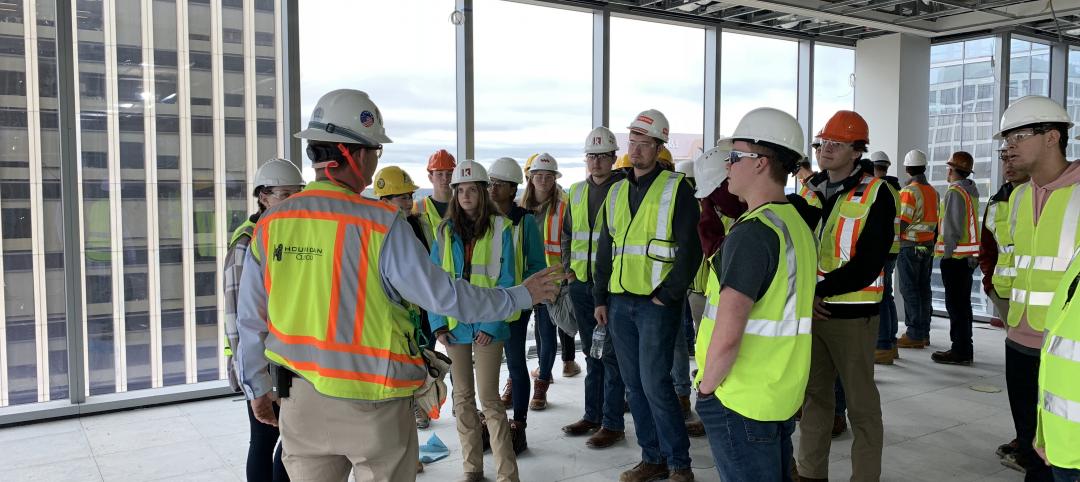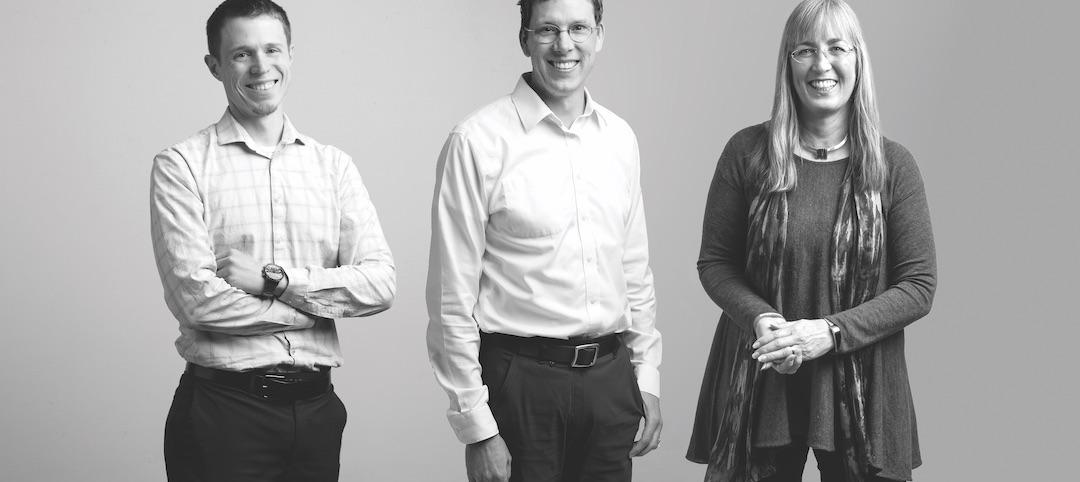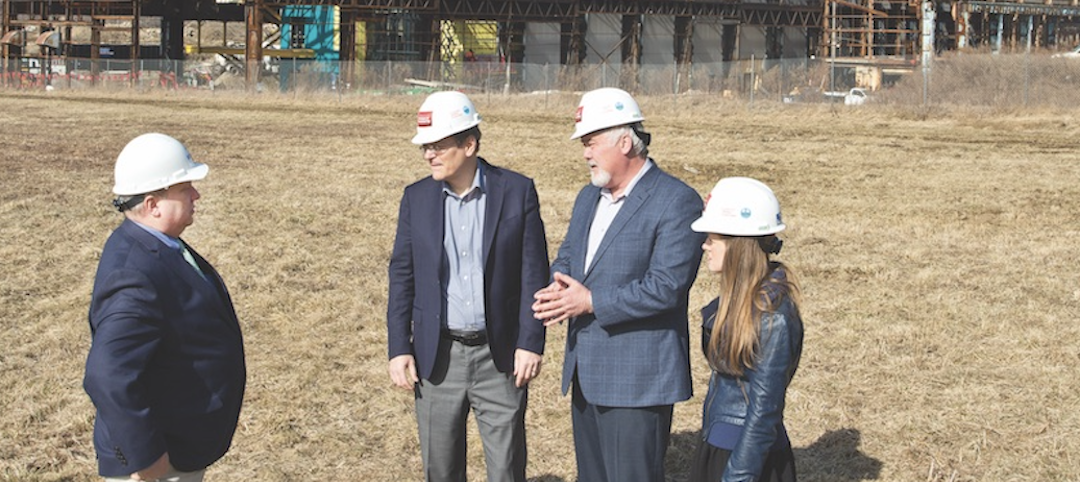Last January, the U.S. Department of Housing and Urban Development awarded a total of $1 billion in National Disaster Resilience grants to 13 states and cities. In making the announcement, HUD made it clear that its judging criteria followed that of Rebuild by Design, a competition that the Rockefeller Foundation initiated in the aftermath of Hurricane Sandy.
The 102-year-old Rockefeller Foundation has long been at the forefront of the resilience movement, helping municipalities and businesses find ways to combat and respond to manmade and natural disasters.
Over the last decade, the Foundation has invested more than $500 million to help communities strengthen their resilience. It has also leveraged $9 billion in resilience investments from governments, private-sector partners, and other actors. The mayors of two dozen U.S. cities (including Berkeley, Calif.; Boulder, Colo.; New Orleans; Pittsburgh; and Tulsa, Okla.) have committed 10% of their cities’ budgets—the equivalent of $5.2 billion—to resilience-building activities.
Rebuild by Design has provided resilience training for 167 communities affected by Hurricane Sandy. Sixty federal agencies have used its training program.
As of April 30, the Foundation’s “100 Resilient Cities” network was fully subscribed; more than 1,100 municipalities applied. “We have 100 test beds proving the resilience model every day,” says the Foundation’s President, Judith Rodin, PhD.
BD+C MOVERS AND SHAPERS
The People, Institutions, and Movements that are influencing design and construction in the U.S. and around the world.
Dan Gilbert – Detroit's Catalytic Converter
Judith Rodin – Crusader for Resilience
Bruce Katz – Urban Evangelist
Millennials – The Disruptors
Alloy LLC – Vertical Integrator
Jerry Yudelson – Green Giant
The PANAMAX Effect – The New Panama Canal
Theaster Gates – Real Estate Artist
Since assuming the position in 2005, Rodin, the former President of the University of Pennsylvania and Provost of Yale University, has seen resilience emerge from being an afterthought in the minds of most civic leaders, to a concern that they can no longer ignore.
“I can’t go to a meeting of mayors and city leaders without being asked how they can join 100 Resilient Cities or get access to those frameworks,” she says.
Rodin sees the AEC community as a “critical partner” in encouraging resilience. The Foundation worked with Arup’s International Development Team to create the engineering giant’s City Resilience Index, which will enable cities to assess their resilience using hundreds of indicators that can be plugged into their own datasets. “Arup has been an amazing thought leader on this,” says Rodin. “We are seeing other [AEC] firms coming to the table, because it’s what their clients are asking for.”
Rodin defines resilience as the ability “to survive, adapt, and grow in the face of stresses and shocks.” The Foundation urges cities to move away from crisis management toward a strategy that anticipates potentially disastrous events.
Corporate types perk up when Rodin mentions how resilience can “give businesses the upper hand” in what she calls “a hugely untapped market.” (One of her recent books is entitled The Resilience Dividend.)
At the BSR Conference in San Francisco last November, Rodin described the five characteristics of resilience: awareness of vulnerability, redundancy, integration, self-regulation, and nimbleness. “You need to prepare to fail safely, not catastrophically,” she told BSR2015 conferees.
She also identified three ways that businesses—presumably including AEC firms—could achieve a resilience dividend: 1) by embedding resilience into their cultures, 2) by creating products and services specifically addressed to resilience, and 3) by positioning themselves as resilience partners with their communities.
RESILIENCE AS A MEANS TO 'TIP' SYSTEMS
Rodin, 71, and the Rockefeller Foundation aren’t just interested in rebuilding communities laid low by disasters: they want to “tip systems.” She sees resilience as much about safeguarding social and economic infrastructures as it is about protecting physical and natural assets.
Rodin test-drove that philosophy during her 11 years as President of Penn, her alma mater, where she worked assiduously with local businesses, law enforcement, and civic leaders in Philadelphia to help make what had been a disadvantaged and crime-ridden neighborhood safer and more economically viable.
Rodin stepped into the resilience breach in 2005 when, at the invitation of Walter Isaacson—the President/CEO of the Aspen Institute and Vice-chair of the Louisiana Recovery Authority—the Foundation funded and helped lead what became the post-Katrina Greater New Orleans recovery plan.
Working with New Orleans over the next decade gave Rodin insight into the power of resilience as a platform “to return and grow.” It wasn’t just about recovering from the flooding; it was also about rectifying years of social inequity.
“We’re definitely seeing the power of resilience as a force for unification in New Orleans,” says Rodin. “Mayor Mitch Landrieu has used resilience as a rallying cry for his city’s comeback.” More than 100 community leaders and stakeholders were consulted by the city to develop its resilience strategy, which launched last August.
Rodin believes resilience gives the Foundation a platform that sidesteps the political minefields of climate change and allows interested parties to “talk about what cities and communities are all experiencing: more disruptions than ever before.”
She says she expects the next global crisis to be about water—not just the availability of supply, but also its quality. By 2030, global water demand is expected to exceed current supply by 40%, according to U.N. estimates.
Rodin warns, Cassandra-like, that the biggest threat to human health and economic progress will come from the further degradation of our natural systems—unless, that is, “we as economic leaders think about revaluing ecosystems and stop viewing them as free goods.”
Related Stories
Women in Design+Construction | Jan 25, 2024
40 Under 40 Class of 2023 winner Kimberly Dowdell inaugurated as AIA 2024 President
The American Institute of Architects (AIA) has announced the inauguration of Kimberly Dowdell, AIA, NOMAC, NCARB, LEED AP BD+C, Principal and Director of Strategic Relationships at HOK and BD+C 40 Under 40 superstar, as its 100th president.
AEC Innovators | Mar 3, 2023
Meet BD+C's 2023 AEC Innovators
More than ever, AEC firms and their suppliers are wedding innovation with corporate responsibility. How they are addressing climate change usually gets the headlines. But as the following articles in our AEC Innovators package chronicle, companies are attempting to make an impact as well on the integrity of their supply chains, the reduction of construction waste, and answering calls for more affordable housing and homeless shelters. As often as not, these companies are partnering with municipalities and nonprofit interest groups to help guide their production.
AEC Innovators | Feb 28, 2023
Meet the 'urban miner' who is rethinking how we deconstruct and reuse buildings
New Horizon Urban Mining, a demolition firm in the Netherlands, has hitched its business model to construction materials recycling. It's plan: deconstruct buildings and infrastructure and sell the building products for reuse in new construction. New Horizon and its Founder Michel Baars have been named 2023 AEC Innovators by Building Design+Construction editors.
40 Under 40 | Oct 19, 2022
Meet the 40 Under 40 class of 2022
Each year, the editors of Building Design+Construction honor 40 architects engineers, contractors, and real estate developers as BD+C 40 Under 40 awards winners. These AEC professionals are recognized for their career achievements, passion for the AEC profession, involvement with AEC industry organizations, and service to their communities.
Movers+Shapers | Nov 7, 2021
Passage of $1.2 trillion infrastructure bill expected to spur stronger construction activity
AEC firms see federal investment as historic
Movers+Shapers | Apr 30, 2020
College programs help prepare students for careers in the construction industry
Universities with AEC programs hone their curricula and research to prepare students to hit the ground running in the construction industry.
Movers+Shapers | Apr 21, 2020
Management Training: AEC firms bring students into the real world
Students benefit substantively from internships offered by AEC firms.
Movers+Shapers | Apr 17, 2020
Meet the ‘AEC outsiders’ who are helping to push the industry into the new decade
AEC professionals have enough on their plates without becoming specialists in a new skill outside of their wheelhouse.
Movers+Shapers | Apr 15, 2020
Buildings as "open source platforms"
NBBJ’s year-old Design Performance Group helps building teams make smarter choices earlier.
Movers+Shapers | Apr 23, 2019
Steely resolve: Carnegie Mellon University fuels Pittsburgh's post-industrial reinvention
After the steel industry started collapsing in the late 1970s, Pittsburgh has been reinventing itself as a science, medical, and academic hub.
















